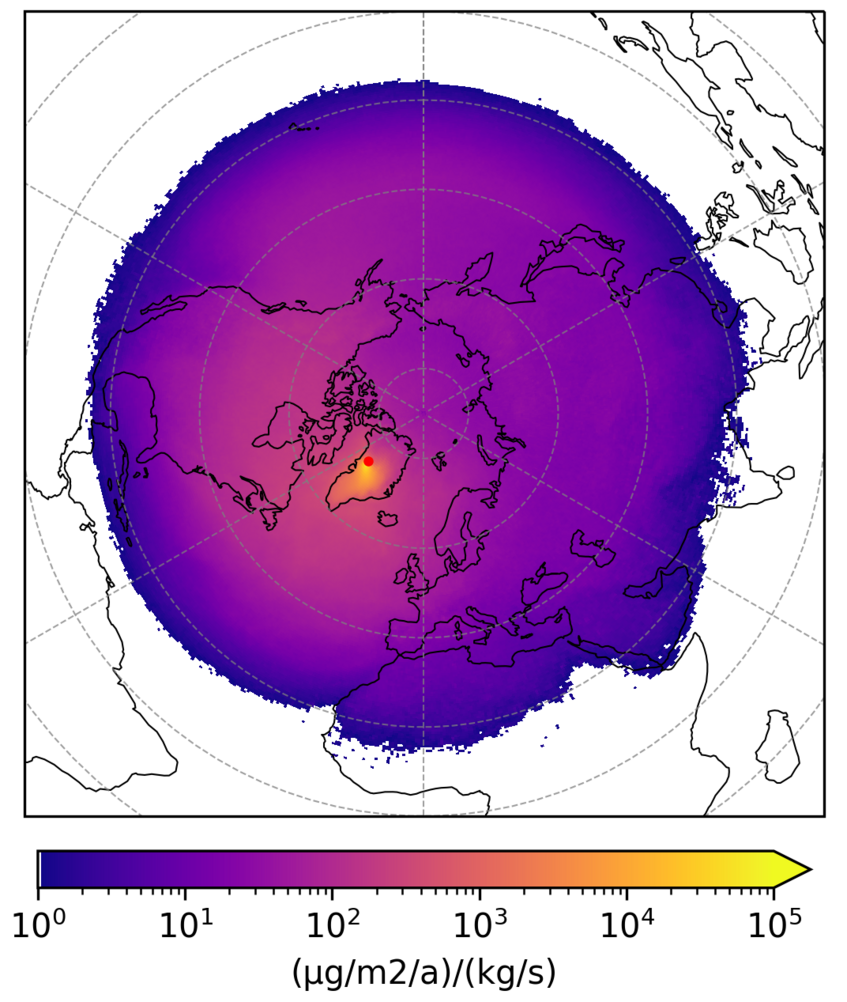Interpretation of ice core data
Since a few years, the atmospheric transport model FLEXPART is also used to assist with the interpretation of ice core records (collected by our collaborators, e.g., in Greenland, Antarctica, the Alps, and the Andes). For this purpose, climatologies of so-called emission sensitivities are calculated with backward-in-time FLEXPART simulations, employing ECMWF re-analysis datasets as meteorological input (CERA-20C or more recently ERA5). These emission sensitivities result in spatial maps of areas which the individual ice core sites are sensitive to, meaning that if particles were released into the atmosphere within the highly emissions sensitive areas, deposition at the respective ice core site is likely to have occured. FLEXPART accounts for wet as well as dry depostion. In combination with estimates of past emission centers (e.g., due to high human activity), the emission sensitivities can be used to explain observations of particles found in ice cores (e.g., lead or black carbon). For this work we collaborate with ice core scientist all over the world.

The figure shows the emission sensitivity for an ice core site in Greenland (indicated with a red dot) based on ERA5 reanalysis data (ten year climatology). The brighter the color, the more sensitive this ice core location is to emissions occuring in the respective grid cell --- a constant emission rate of 1 kg/s at a given grid cell results in a deposition rate indicated by the color (given in µg/m2/a). © Andreas Plach
Scientists
Publications
- McConnell, J.R., N.J. Chellman, R. Mulvaney, S. Eckhardt, A. Stohl, G. Plunkett, S. Kipfstuhl, J. Freitag, E. Isaksson, K.E. Gleason, S.O. Brugger, D.B. McWethy, N.J. Abram, P. Liu, and A.J. Aristarain (2021): Hemispheric black carbon increase after the 13th-century Māori arrival in New Zealand. Nature 598, 82–85 (2021); doi.org/10.1038/s41586-021-03858-9
- McConnell, J.R., A.I. Wilson, A. Stohl, M.M. Arienzo, N.J. Chellman, S. Eckhardt, E.M. Thompson, A.M. Pollard, and J.P. Steffensen (2018): Lead pollution recorded in Greenland ice indicates European emissions tracked plagues, wars, and imperial expansion during antiquity. Proceedings of the National Academy of Sciences May 2018, 115 (22) 5726-5731; doi.org/10.1073/pnas.1721818115
